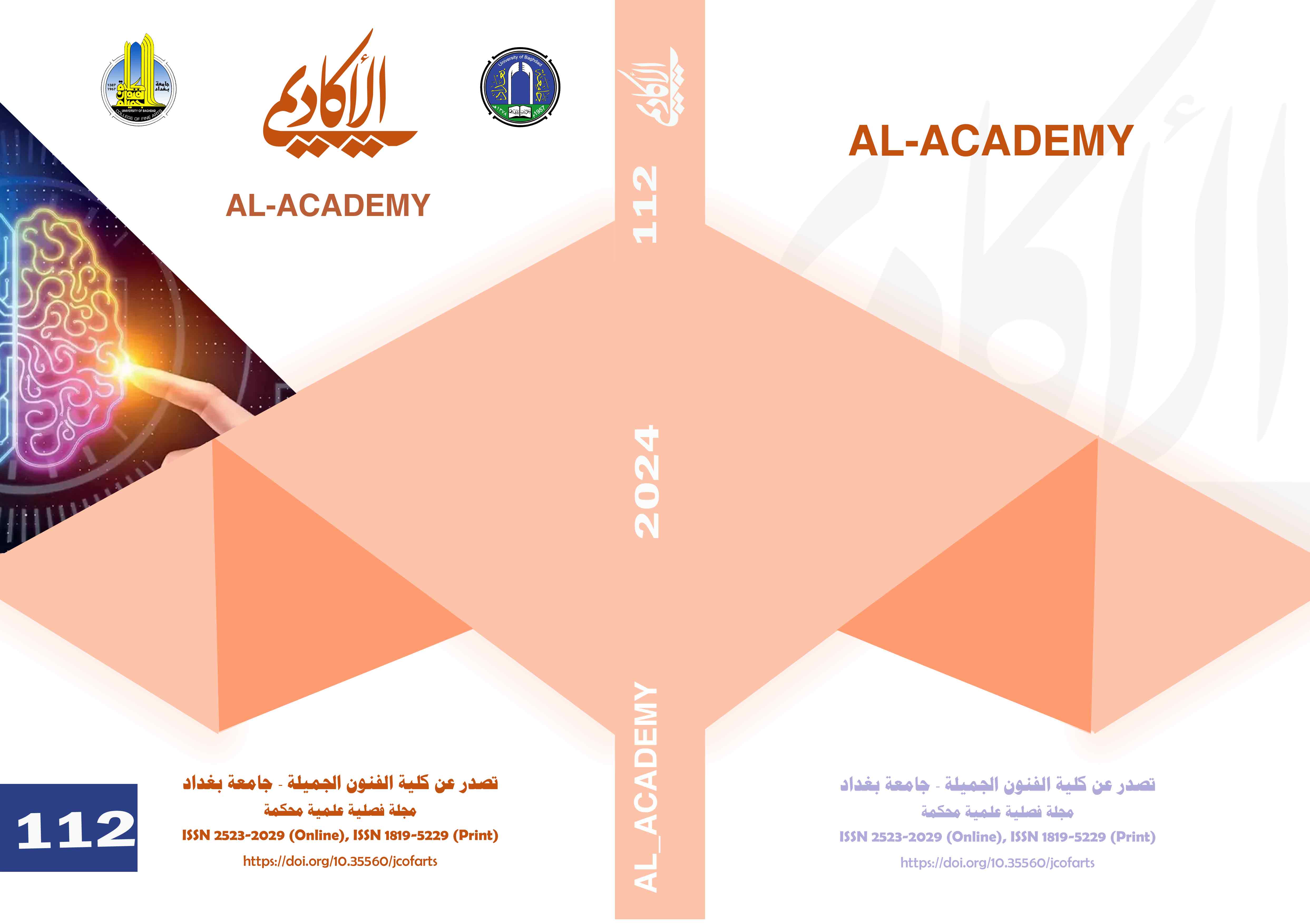Chauvinistic Features in The Designs of Political Propaganda Posters
DOI:
https://doi.org/10.35560/jcofarts1462Keywords:
Chauvinism chauvinistic design chauvinistic poster chauvinistic implicationAbstract
Based on the danger of chauvinism and the strife, conflicts and disagreements it raises among society and its expansion due to the development of global network communications, and the importance of posters as an effective visual artistic means that addresses the public, especially those posters that specialize in complex functional performance, such as propaganda posters spread across the Internet, and specifically political propaganda posters, The researcher’s motivation to stop at the topic of “chauvinism” in the designs of propaganda posters, due to its role in changing the convictions of public opinion and trying to lead it according to planned paths and directions, and his desire to identify and introduce the chauvinistic features in the designs of these posters spread across the Internet. He formulated the problem of his research in the first chapter with a question. : (What are the chauvinist features in the designs of political propaganda posters?) Its goal was (to identify the chauvinist features in the designs of political propaganda posters), reviewing the importance of research at both the theoretical and applied levels. The second chapter included the theoretical framework, divided into two sections: (chauvinism and its intellectual references, and chauvinist mechanisms in designing the advertising poster). In the first section, it dealt with an introduction to learning about the concept of chauvinism, its goals, and its methods in designing political propaganda posters. The second section also dealt with the chauvinistic implication in the poster and the chauvinistic techniques employed in it, as well as chauvinist propaganda and its communicative message in the poster.
In the third chapter, the researcher determined his research methodology by using the descriptive approach to analyze sample models, which was represented by a research sample that included (5) posters from the research community, which was limited to (20) posters that participated in a virtual exhibition on the Internet whose topic was focused on political propaganda for the current Russian-Ukrainian war.
References
François, M. (2017). Fundamentals of Intolerance. (Q. Al-Miqdad, Trans.) Damascus: Nineveh House for Studies, Publishing and Distribution.
Abdel Razzaq, I.-D. (2018). Chauvinism, a research into the term, its history, and its intellectual doctrines, , . Iraq: Islamic Center for Strategic Studies, the Holy Abbasid Shrine, Holy Karbala.
Al-Assaf, Y. (2020). A New Digital Era. Beirut: Arab Foundation for Studies and Publishing.
Al-Farahidi, A.-R.-K. (1981). Kitab al-Ayn. Baghdad: Dar al-Rasheed Publishing.
Al-Farsi, S. (2016, 10 15). Chauvinism...and the Chauvinists. Retrieved from https://alroya.om/p/172254.
Al-Fatlawi, A. (2016). Contemporary Terms. Najaf Al-Ashraf: Islamic Center for Strategic Studies and Research, Al-Abbas Holy Shrine.
al-Fayrouzabadi, M.-D. (B.T). The Ocean Dictionary. Egypt: Al-Halabi Publishing and Distribution Foundation.
Al-Furati, F. (2008, 5 29). Chauvinism between political connotation and terminology. Retrieved from Civilized dialogue / https://www.ahewar.org/debat/show.art.asp?aid=136088.
Al-Hawari, S. (2021). Media Governance between Terminological and Legal Theory and the Reality of Misinformation. Berlin: Arab Democratic Center.
Al-Khazraji, T. (2015). Significant Diversity in the Constructivism of the Contemporary Poster. University of Baghdad, College of Fine Arts, Master’s thesis.
Al-Muttalabi, L. (2022). The Rhetoric of Visual Narrative, Graphic Design Theory and Application. Baghdad: Dar Ahwar for Publishing and Distribution.
Al-Najjar, S.-G. (2015). Film and Digital Photojournalism. Egypt: Egyptian Lebanese House.
Al-Raji, M. (2018). The Fake News Industry and the Screw of the Information Siege of Public Opinion. Qatar: Al Jazeera Center for Studies.
Al-Shamimari, F. (2010). Media Education: How We Deal with the Media. Riyadh: King Fahd National Library for Publishing and Distribution.
Al-Tayyar, K. (2022). Narration in Light, Aesthetics of Photography. Karbala: Dar Al-Warith for Printing and Publishing.
Al-Zubaidi, M.-H. (1998). Taj Al-Arous. Kuwait: National Council for Culture and Arts.
Arabic Language Academy. (2004). Intermediate Dictionary (Vol. 4). Cairo: Al-Shorouk International Press.
Cambridge Dictionary . (2024). chauvinism. Retrieved from https://dictionary.cambridge.org/.
Imam, I. A. (2013). Philosophy and Contemporary Issues. Kuwait: Arab Journal for the Humanities, Scientific Publishing Council, Kuwait University, Issue 124.
Jabbar, R. (2017). The design construction of satellite channel logos. Baghdad: research published in Al-Technical Magazine, Volume 30, Issue5.
Jumaa, A. (2018). Journalism in Wartime. Qatar: Al Jazeera Media Institute.
Muhammad, N. (2011). in the field of print design. Baghdad: Yanabe’a Printing House.
Najm al-Din, R. (2021). Made in Design. Baghdad: Dar Sutour for Publishing and Distribution.
Sloterdijk, P. (2019). Criticism of the Cynic Mind. (N. Al-Aounli, Trans.) Al-Jamal Publications: Lebanon.
Younan, C. (2011). Verbal Misinformation and Mechanisms of Controlling Opinion. Egypt: Dar Al Nahda Al Arabi for Printing and Publishing.
Downloads
Published
Issue
Section
License
Copyright (c) 2024 Akram Abdulsattar Mohsin, Akram Jirjees Neamah

This work is licensed under a Creative Commons Attribution 4.0 International License.
















